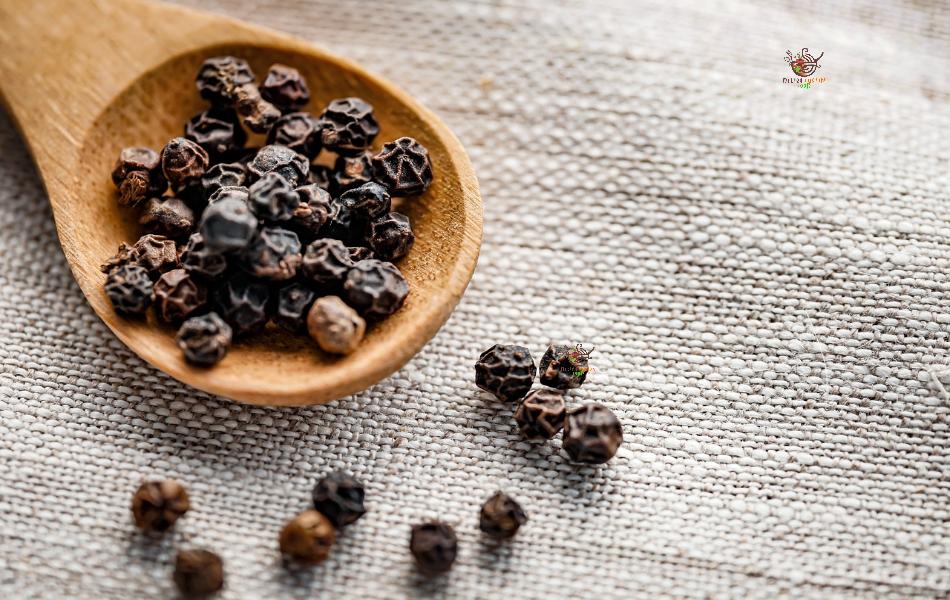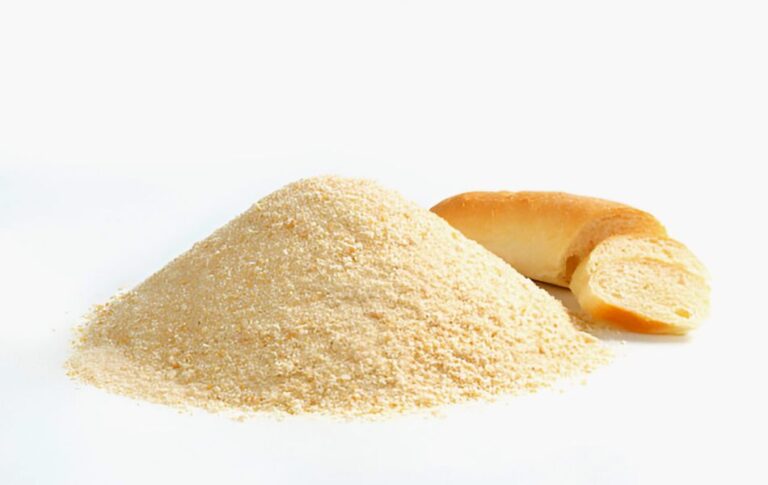14 Black Pepper Substitutes for Flavorful Cooking
Black pepper is essential in many cuisines worldwide. It has a distinct flavor, adding taste and heat as a condiment. Grown primarily in India and South America, it originates from berries on the Piper Nigrum vine. Different regions produce peppercorns with varying spiciness.
Freshly ground pepper is preferable for its enhanced flavor, though pre-ground options are readily available in supermarkets. Black pepper adds a nice touch to various dishes, such as pasta, soups, and sauces. If you run out or don’t have any in your cupboards, there are several Black Pepper Substitutes that you can try.
Understanding Black Pepper
Black pepper comes from the berries of the Piper nigrum plant in India. Harvested green, they dry into black seeds after sun or machine drying. Then the outer layer is removed, revealing the black seeds we know as black pepper. India is the top producer, but it’s also grown in Vietnam, Indonesia, and Brazil, each contributing unique flavors.
Nutritional Value
Black pepper isn’t just tasty; it’s rich in antioxidants, vitamins A and C, potassium, and piperine, known for anti-inflammatory and anti-cancer effects.
Heat and Flavor
With moderate heat, black pepper’s flavor includes hints of citrus, pine, and earthiness, varying by region and production methods.
Black Pepper Substitutes
In cooking, black pepper stands out as a widely used spice. Yet, there are instances when you run out or opt for a substitute. Discover some of the best alternatives to black pepper for your cooking needs.
1. White Peppercorns
White peppercorns make a great substitute for black pepper since they come from the same plant. Both are small dry berries from the Piper Nigrum plant. The difference lies in their harvesting and processing methods.

Unripe berries, roasted and dried, yield black pepper, explaining its dark hue. In contrast, fully ripe berries contribute to white peppercorns, allowing for their interchangeable use.
White pepper is fruitier and mild, while black pepper is sharper with a smoky, peppery flavor.
2. Green Pepper
Green peppercorns belong to a distinct pepper variety, closely resembling black pepper. They thrive on vines and are swiftly packed immediately after being harvested. Green peppercorns are picked before full ripening, offering a fresh, slightly fruity flavor. Preserving them like this is necessary because they’re too delicate to be dried.
The flavor is milder, and the color varies from bright green to dark olive-green. Their heat is milder than black pepper, adding a unique touch to your dishes.
You can find this spice in most grocery stores. However, it’s crucial to distinguish between ground-up green peppercorns and fresh ones. The latter is usually pricier due to their fragility and limited availability. Substitute an equal amount of green peppercorns for black pepper. Adjust the quantity to match your taste preferences and recipe needs.
3. Pink Peppercorns
Pink peppers come from the fruits of the Peruvian pepper tree, Schinus Molle. They belong to the cashew family. Pink peppercorns originate from a different plant but share a similar taste with black pepper. However, they are slightly milder. Additionally, they possess a sweet-resinous aroma.
Many prefer the fruity taste of pink peppercorns to black pepper. They use them in risotto, meats, wines, and baking. Substitute pink peppercorns equally for black pepper, adjusting to your taste and recipe needs.
4. Sichuan Pepper
Sichuan pepper is a distinct type of peppercorn commonly used in Chinese cuisine. This pepper has a unique flavor, making it an acquired taste. The taste of Sichuan peppercorns is sharp, tingly, and slightly sweet. Some people find its flavor similar to a mix of black pepper and citrus.

The peppercorns are typically roasted and finely ground for this spice. Note that Sichuan peppercorns may lose flavor if added to food too long after cooking.
Many recipes use Sichuan pepper. It’s not a replacement for black pepper but adds great flavor to stir-fry and Chinese dishes. Use the same amount as black pepper, adjusting to your liking and recipe.
5. Cayenne Pepper
Cayenne comes from the Tupi word for pepper. It’s common in Caribbean, Creole, and Cajun dishes. Cayenne peppers are like jalapenos and other peppers. Cayenne peppers are used in traditional Chinese and Ayurvedic medicines and can aid with circulatory problems. They provide a spicy, hot taste, so use them in small amounts. Cayenne pepper is available in both powdered and whole forms for cooking.
6. Coriander Seeds
Coriander seeds resemble black peppercorns, but a notable difference distinguishes them. These seeds are significantly more fragrant and flavorful than their counterpart. The flavor of coriander seeds is warm and earthy, featuring a very mild citrus aftertaste. Recognizing them from black pepper is easiest by their darker color, often appearing brown or tan rather than black.
These seeds play a crucial role in seasoning and are essential in various popular recipes. One example is cilantro lime rice, where cilantro and coriander seeds contribute to a distinctive taste. Coriander seeds provide a mild heat level with a warm, citrusy flavor. While they don’t directly replace the spiciness of black pepper, they can introduce a unique flavor profile as a substitute.
To substitute for black pepper, use an equal amount of coriander seeds, adjusting the quantity to match your taste preferences and recipe requirements.
7. Allspice
Allspice comprises dried berries sourced from the Pimenta dioica plant, a member of the Myrtle family. It serves as a fundamental ingredient in Caribbean and Middle Eastern cuisines.
Despite the name suggesting a mixture, allspice is a single spice composed of dried berries obtained from allspice trees. These berries resemble peppercorns, providing them with a similar appearance.
Allspice blends the flavors of cinnamon, pepper, and nutmeg, contributing a distinctive taste to your dish. In terms of usage, incorporate it to flavor desserts, enhance beverages like mulled wine, and add depth to side dishes, among other possibilities.
8. Ground Ginger
Surprisingly, ground ginger can serve as a substitute for black peppercorns. It provides a peppery kick with hints of citrus, along with floral and sweet notes that won’t significantly change the dish.
9. Cumin

Cumin tastes warm and earthy, making it a good stand-in for black pepper in Mexican and Indian dishes. Just use the same amount as you would for black pepper.
10. Cardamom
Cardamom is sweet and spicy. It’s good as a black pepper substitute in sweet and savory foods. Use it the same way you would use black pepper.
11. Paprika
Paprika is made from spicy red peppers and can replace black pepper. It’s a bit spicy and gives a fruity smell. Use it in the same amount as you would use black pepper, but remember, it might change the dish’s color a bit, making it pinkish.
12. Papaya Seeds
Papaya seeds, those hidden gems inside the papaya, offer a natural alternative to black pepper! Instead of throwing them away, try this easy way to use them:
- Slice your papaya in half and remove the seeds.
- Let the seeds dry or rub them in a towel.
- Then, spread the seeds on a baking tray and crush them when they’re dry. Now you’ve got a substitute for black pepper!
13. Mustard
Mustard seeds have a bit of spiciness and a strong flavor, making them a good substitute for black pepper. Just grind them up and use them in the same amount in dishes that need black pepper.
14. Capers
Capers come from the Capparis shrub in the Mediterranean and are green peppercorns. Whether soaked in brine or left to dry, capers bring a lot of flavors to the food you use them in.
Additionally, they improve the texture of dishes such as fish, pasta, stews, and more. These green buds contribute a tangy, sour, and salty flavor to almost every recipe. Therefore, many people use capers in condiments and dressings.
Choosing the Best Black Pepper Substitute
Choosing a substitute for black pepper involves considering the dish, desired flavor, and texture. Different dishes need different substitutes. For instance, fish dishes may need a milder substitute, while savory dishes may require a more complex one.
Chicken dishes may benefit from a slightly sweeter substitute, while vegetables and stir-fries may need a more tart flavor.
Consider the flavor of the substitute; some may be sweeter, like papaya seeds for sweet dishes, while others, like grains of paradise, work well in savory dishes due to their complex flavor.
Also, think about how it feels. Use smooth white pepper when you want it to feel smoother, or go for a slightly gritty green peppercorns for a different texture.
See Also – No Garlic Pepper? Substitutes to Enhance Your Dishes
Conclusion
Various substitutes mimic the taste and aroma of black pepper in cooking. Options like white pepper, green peppercorns, pink peppercorns, and Sichuan peppercorns bring a unique flavor. The choice depends on the dish. While all contain piperine, responsible for black pepper’s pungency, the amount varies, resulting in different flavors. Note that some, like Sichuan and pink peppercorns, have distinct tastes, suitable for dishes where they complement the flavor. These substitutes offer excellent alternatives for various recipes when black pepper isn’t available or for health reasons.







